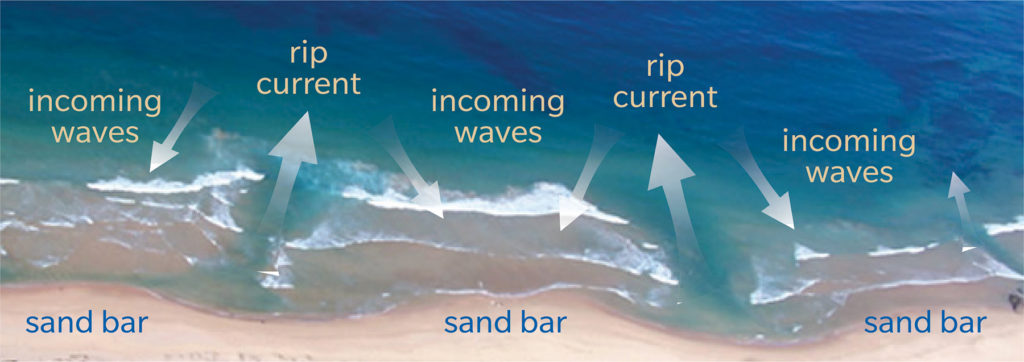A group of residents has created a beach safety brochure for swimmers at Pearl Beach, after the unpatrolled area was declared a ‘black spot’ due to drownings and surging waves.
In a show of community collaboration, Central Coast Council Lifeguards, members of the Pearl Beach Progress Association’s Safety Advisory Group, Pearl Beach Patonga Real Estate, Pearl Beach General Store and Café and representatives from Ocean Beach, Umina and Central Coast Surf Life Saving Clubs (SLSC) pooled their resources to create the brochure.
Umina and Ocean Beach SLSCs are currently first responders for aquatic and other emergencies occurring in Pearl Beach.
Louise Lambeth, from Umina SLSC said Pearl Beach was renowned for its dangerous surf conditions.
“Pearl Beach has a vibrant community who are proactive in providing safety information and resources to help prevent future tragedies,” Lambeth said.
“Central Coast Council has been working with the Pearl Beach Progress Association on the safety signage and resources and exploring the logistics and options for future education or lifeguard coverage over the Christmas period.
“Central Coast Surf Life Saving has been developing ‘black spot’ brochures to help educate the community about the dangers that are particular to an unpatrolled beach or section of a beach identified by surf clubs as dangerous to the public.
“It is exciting to see the involved parties beginning to work together to achieve a common goal – zero drownings at Pearl Beach!”
Lambeth, who is also the founder of Deep Water Publishing, said she has a specific interest in drowning prevention at Pearl Beach, with her first publication, Annie and the Waves, dedicated to the memory of a five-year-old boy who drowned at Pearl Beach in 2014.
“Education has been identified as one of the top ways to help prevent drowning,” Lambeth said.
“By learning about a beach and its inherent dangers we can make wiser choices about where or when to swim.
“Providing information that is specific to safety at Pearl Beach will help educate residents and visitors, who in turn can share this knowledge with others.
“There have been two recent drownings at Pearl Beach – a five-year-old boy drowned in July 2014 and a man in his 70s who tried to rescue a dog in March 2021.
“Additionally, anecdotes of rescues are reported on a regular basis but at this stage the data is not captured and reported on.
“Pearl Beach has a unique beach morphology… the sand is quite different from the neighbouring Umina and Ocean Beaches. The shape of the beach, the direction it faces, and the specific type of sand found on the beach reveals just why the beach is so dangerous.
“The beach has a sudden drop off into deep water with surging waves that can sweep you into deep water.
“This is particularly dangerous for children and elderly people which matches the two people who drowned here.
“If there is a high east or southeast swell there is a strong and dangerous shore break, you will hear the boom of the waves!
“The middle to northern end of the beach is particularly dangerous for everyone.”
Central Coast Council Lifeguard Service and Ocean Beach Surf Lifesavers have begun a series of joint water safety education talks at Pearl Beach.
The first was held earlier this month with the second beach education session held on January 26.
The brochure is also available from the Pearl Beach Progress Association, the Pearl Beach General Store and Pearl Beach Patonga Real Estate.
Additionally, copies are being provided to Pearl Beach holiday rentals.
Lambeth said there are five key measures to stay safe in the water: don’t rush until you have looked for potential hazards, plan to swim at a patrolled beach, never swim alone, always supervise children, and do not consume alcohol if you have planned to enter the water.
Maisy Rae




